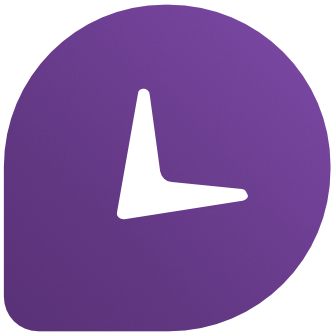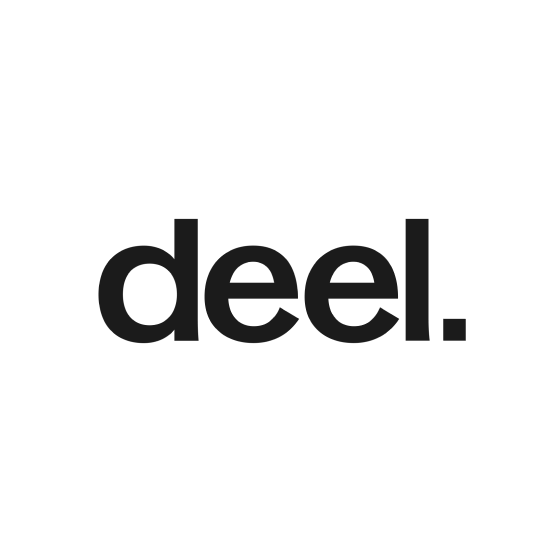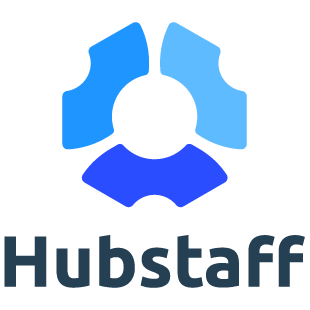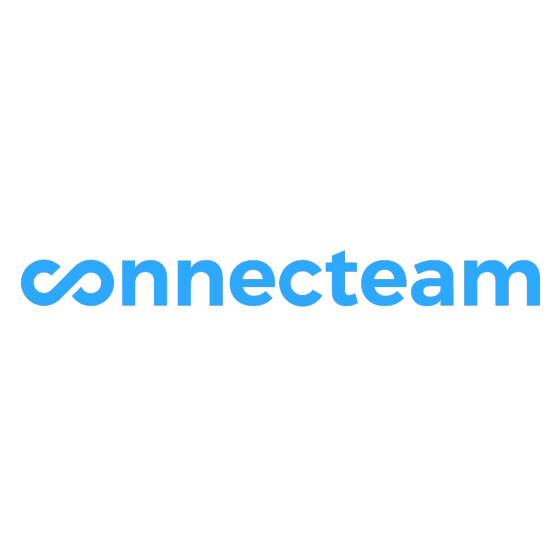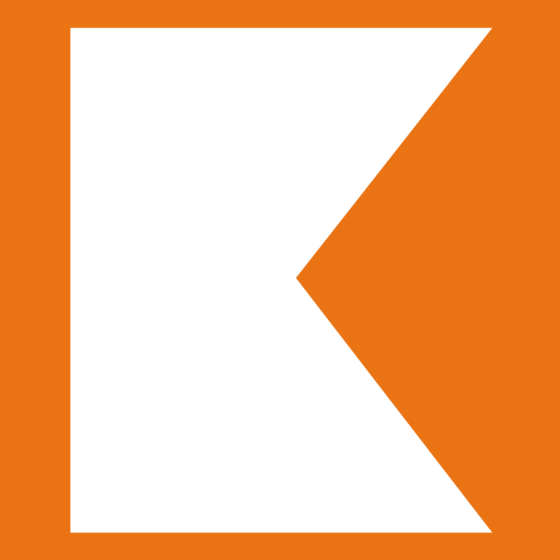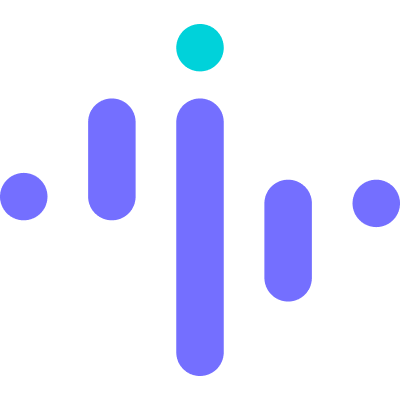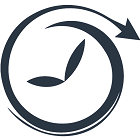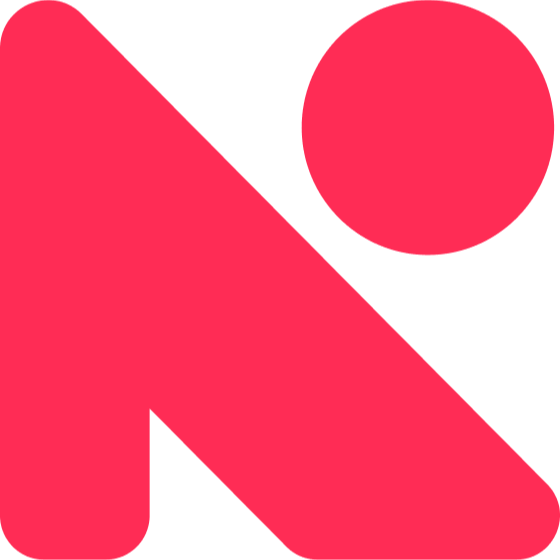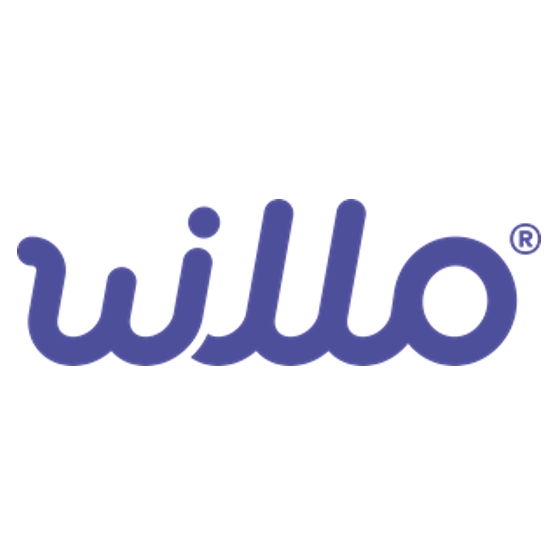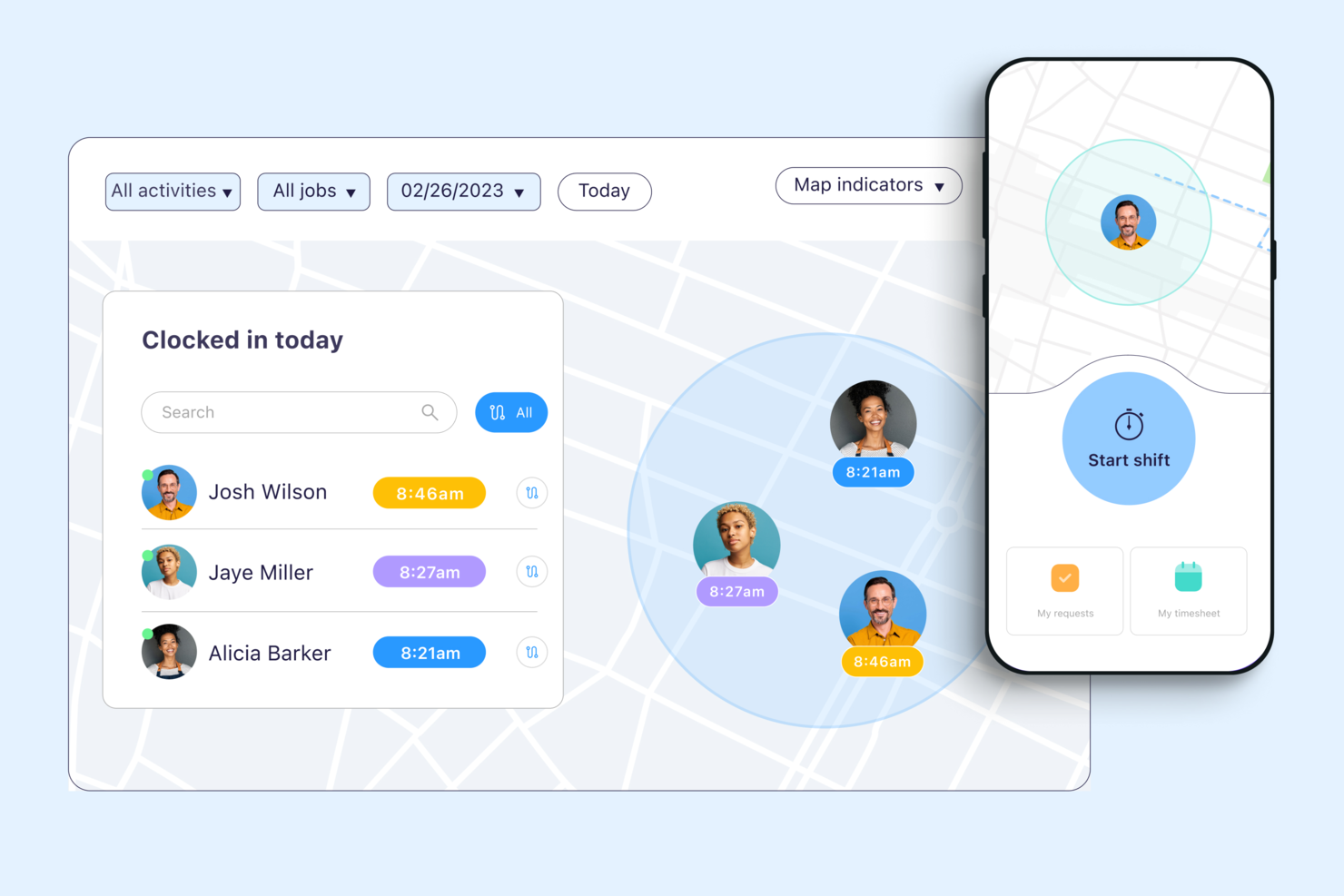Best Time Tracking Software Shortlist
Here’s some of the best time tracking tools on the market:
Employee time tracking software improves the present and future of project management. Let me elaborate. Currently, you are working with your team on a project. As part of your monitoring phase, you are keeping track of activities, your plan, and hopefully the hours being invested in each activity.
Knowing where your team is investing their time is informing your client conversations over budget spending, your talks with the team over time allocation, and even resource scheduling conversations with other DPMs wanting your resources.
Once this project is done, you will surely embark on another adventure and the cycle restarts. The time you and your team tracked will now inform future estimates for project activities and overall more accurate price and time-related conversations with the client.
Therefore, using time tracking tools is an essential part of a DPMs toolbox. Whether that is a best-of-breed or an all-in-one solution is up to you.
How We Picked The Best Time Tracking Software
I evaluated and compared the most popular time tracking software on the market, both for its reviews and user interface. Then I weighed factors that make software a good option for project management, such as the ones that follow.
- User Interface: The software needs to have a nice UI and be easy to use. A good interface will make it easier for your employees to clock in their work time. In contrast, a bad UI will deter them from it.
- Online time tracking variety: I look at all the ways in which a team can track accurate time. This could mean importing Excel timesheets, using a time clock or creating templates.
- Integrations: I looked at how you can expand the software's functionality. On the one hand, maybe some of these time tracking tools can be embedded into your existing tools. On the other hand, maybe the software can integrate other tools that enable invoicing like Quickbooks and Xero.
- Pricing: Your time tracking app should be a cheap addition to your current tech stack, especially if you are part of a small business. Therefore, I’ll point out the price and if there are available free versions or free trials.
Best Time Tracking Software Summary
Here is a convenient list with all the highlights you need from what we covered above.
| Tool | Best For | Trial Info | Price | ||
|---|---|---|---|---|---|
| 1 | Best for distributed teams | 10-day free trial | From $5.99/user/month | Website | |
| 2 | Best for keeping payroll in sync | Free trial + demo available | From $29/month | Website | |
| 3 | Best for intelligent time tracking | 14-day free trial | From $6/user/month | Website | |
| 4 | Best for distributed teams | 14-day free trial | From $7/user/month | Website | |
| 5 | Best for project time tracking | 14-day free trial + free plan available | From $8/user/month (billed annually) | Website | |
| 6 | Best GPS time tracking for mobile teams | 14-day free trial + free plan available | From $29/month (for up to 30 users, billed annually) + $0.5/user/month for each additional user | Website | |
| 7 | Best for full lifecycle time tracking | Free demo available | Pricing upon request | Website | |
| 8 | Best for tracking time with resource scheduling | 30-day free trial | From $4.16/user/month (billed annually) | Website | |
| 9 | Best for remote team monitoring | 7-day free trial | From $8/user/month | Website | |
| 10 | Best time clock for GPS and image tracking | 14-day free trial | From $3.99/user/month + $19/month base fee | Website |
-

Rippling
Visit WebsiteThis is an aggregated rating for this tool including ratings from Crozdesk users and ratings from other sites.4.8 -

Native Teams
Visit WebsiteThis is an aggregated rating for this tool including ratings from Crozdesk users and ratings from other sites.4.9 -

Willo
Visit WebsiteThis is an aggregated rating for this tool including ratings from Crozdesk users and ratings from other sites.4.8
Best Time Tracking Software Overviews
Here’s a brief overview of each tool.
Monitask is an employee monitoring solution designed to help to boost productivity, efficiency, and accountability across your team. It's an easy-to-use time-tracking software designed for remote teams, and it includes automatic timesheets and screenshots of employees’ workstations as proof of work done. Screenshot monitoring is completely transparent to the employees and they control when the monitoring starts and when it stops.
Monitask was designed for companies of all sizes that have remote team members working on Windows and Mac computers, such as freelancers, contractors, remote employees, and employees that work from home occasionally. Monitask is also useful for freelancers that would like to show proof of work being done to their clients. Overall, it's a lightweight tool that offers simple, quick, and accurate time tracking for freelancers and contractors without having to manually create and itemize timesheets.
This time tracking software includes some simple and useful reporting features. For instance, managers can also access a dashboard to keep track of their team. For detailed information, businesses can log in and view employee’s timeline to see how much time was spent on different projects, the employee’s activity level, and applications that were running and the websites visited. All projects have individual reports that can be generated by employers, employees, freelancers, or contractors.
In terms of customer support, the company prides itself on providing high-quality customer service, with a team responding to every query.
There aren't any out-of-the-box integrations, but you can use Zapier to connect Monitask with different task tracking and project management tools.
Monitask's Pro account costs from $5.99/user/month. They also offer a free plan for personal use.
Deel is an HR and payroll platform designed for businesses with distributed teams. It’s especially useful if you’re hiring across different countries, handling compliance, and managing international payments.
Why I picked Deel: Deel’s time-tracking feature simplifies hour tracking for you and your team. With its clock-in and clock-out widget, available on both desktop and mobile, your team can quickly log hours and breaks, which are automatically recorded in their timesheets. Manual adjustments can be made as needed, while permissions can be set to control who edits or adds hours. This approach reduces errors and keeps payroll in sync with actual hours worked, helping you avoid surprises on payday and making your time management more accurate.
Deel Standout Features & Integrations
Features include an integrated time approval workflow that allows managers to review and approve team members' logged hours before they are synced to payroll. Its geo-tagging feature adds an extra layer of accountability, verifying the location of clock-ins and clock-outs for distributed teams. Furthermore, Deel supports automated overtime calculations and compliance with local labor laws, which helps streamline the time-tracking process for international teams.
Integrations include Google Workspace, Hubstaff, Brex, Personio, Sage, Slack, Microsoft Teams, Workable, UKG Ready, QuickBooks, Xero, and BambooHR.
Pros and cons
Pros:
- Time tracking integrates tightly with Deel's payroll system
- Provides a range of HR tools outside of time tracking
- Convenient clock-in/out widget, with the option to adjust time manually
Cons:
- Not ideal for teams looking for only a time-tracking solution
- Lacks project-level time tracking and billable hours
New Product Updates from Deel
Introducing Deel AI Workforce
Deel has launched the AI Workforce, a set of specialized agents designed to handle repetitive HR, payroll, and compliance tasks with speed and accuracy. These AI agents don’t just assist—they execute tasks from start to finish. For more information, visit Deel's official site.
Replicon is a time tracking and timesheet software with a project time tracking product suite. This suite can help you manage project hours and costs, paid time off, and track billable hours and project expenses.
Why I picked Replicon: I chose this tool for the list because of its intelligent time tracking feature, which leverages AI and machine learning to help populate timesheets for employees based on the apps they use. The app will track employee activity across different platforms and pre-fill timesheets for them. Additionally, it will reconstruct the work week across multiple projects.
Replicon also has a mobile app that you can use to track time from any device. This makes it easy to track time while you are away from your computer.
Replicon Standout Features & Integrations
Features include advanced multi-level approval workflows that allow organizations to customize approval hierarchies for timesheets and project hours based on complex requirements. Its time intelligence system also offers predictive analytics that enable managers to identify patterns in time usage and proactively address inefficiencies or bottlenecks.
Integrations include SAP, ADP, Salesforce, Slack, Quickbooks, Jira, ServiceNow, Xero, Workday, Myob, Adobe XD, and Bamboo HR.
Pros and cons
Pros:
- Real-time compliance updates
- The mobile app allows employees to clock in/out on the go
- Ability to tailor the system to various country-specific labor laws
Cons:
- Interface is outdated compared to other solutions
- Creating custom reports can be complex
New Product Updates from Replicon
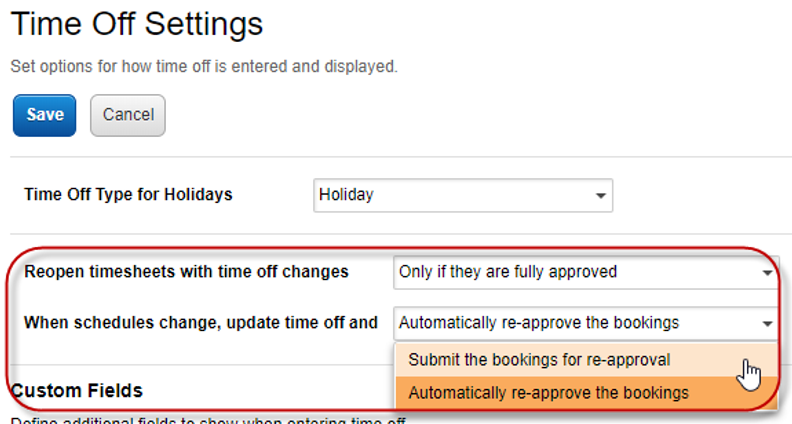
New Time Off Booking Validation Rule
Replicon introduces a new time off booking validation rule to enhance compliance. For more information, visit Replicon's official site.
Hubstaff is a time tracking and workforce management tool designed for remote and hybrid teams. It helps you monitor work hours, track productivity, and manage payroll, all from one platform.
Why I picked Hubstaff: I think Hubstaff is particularly useful for distributed teams because, aside from features like automatic time tracking and detailed timesheet generation, it also includes activity monitoring. It records keyboard and mouse activity levels to give you a sense of how engaged team members are during work hours. This helps you understand productivity patterns without being intrusive. You can also enable optional screenshots, which are taken at intervals and can be adjusted or turned off based on your team's preferences.
Hubstaff Standout Features & Integrations
Features include GPS and geofencing capabilities that are especially useful for field workers or those who move between locations. Hubstaff also offers project budgeting tools that allow you to set time and cost limits for projects, helping you stay on track financially.
Integrations include Asana, Jira, Basecamp, QuickBooks, PayPal, Salesforce, and Zendesk.
Pros and cons
Pros:
- Optional screenshots and activity levels provide transparenc
- Detailed reporting helps in analyzing productivity and project costs
- Accurate time tracking with idle detection helps prevent inflated time logs
Cons:
- Limited customization options may not suit all business needs
- The project management features are basic compared to dedicated tools
monday.com is a work operating system designed to help teams manage projects, tasks, and workflows in one place. It offers customizable boards and columns to organize and track work across various departments. For many professionals, the platform also translates into significant time savings. Adam Bushell, Owner & Director of AB Electrical and Communications, shared his experience: “The platform saved me some hours per week of doing manual updates. As an example, I would spend some three hours on Fridays balancing hours and materials in spreadsheets but on monday.com it took just under an hour."
Why I picked monday.com: I like that monday.com has a time tracking column that lets you track the time spent on each task by starting and stopping a timer directly within the task item. You can also manually add time entries if needed. This helps your team understand how much time is being spent on various tasks, aiding in better project planning and resource allocation.
monday.com Standout Features & Integrations
Features include a time tracking widget that provides insights into team performance and time allocation, helping you identify areas where time is being spent efficiently or where improvements can be made. Additionally, the platform offers a workload view, helping you visualize who is working on what and for how long, which aids in balancing workloads and preventing burnout.
Integrations include business apps like Slack, Google Drive, Gmail, Google Calendar, Harvest, Jira, GitHub, Trello, Dropbox, Typeform, and many more, accessible via Zapier.
Pros and cons
Pros:
- Gives you the option to export time tracking data
- Integrates time tracking with workload visibility
- Customizable dashboards for better project visibility
Cons:
- Platform may be too simple for more complex time management needs
- Lacks advanced time tracking, like automated timesheets
New Product Updates from monday.com
New AI Integration Enhancements on monday.com
Easily integrate AI agents and apps to enhance task management and insight generation. For more information, visit monday.com's official site.
Connecteam is a workplace software company that offers products for operational, communication, and skills management. The operational platform facilitates time tracking and employee scheduling.
Why I picked Connecteam: I am particularly impressed by Connecteam's operations management software, which offers a unique approach to time tracking, scheduling, and task management features. Employees can log their time in the system and it even provides GPS tracking to keep managers updated on the whereabouts of mobile teams. You can also assign shifts and tasks to employees, and oversee their work with forms and checklists.
I also like how Connecteam's software can be connected with a payroll platform, so you can easily use schedules and timesheets for pay administration. Additionally, the platform offers several customization tools for your team's unique tasks and timesheet needs.
Connecteam Standout Features & Integrations
Features include a geo-fencing feature that ensures employees can only clock in and out within a designated physical location, providing an added layer of accountability for remote or field teams. The platform's kiosk mode also allows multiple employees to log time from a single shared device, which is ideal for industries like retail or hospitality.
Integrations include Paychex, Xero, Gusto, QuickBooks Payroll (online + desktop), Google Calendar and others.
Pros and cons
Pros:
- Can set specific rules for breaks, overtime, and pay rates
- Ability to track employee locations and set geofenced areas
- Variety of clock-in methods, including mobile app, kiosk, and NFC badges
Cons:
- Setting user roles and permissions can be unintuitive
- Push notifications are sometimes delayed
Kantata is a work management platform built for professional services teams that need more than simple hour tracking. It ties time tracking into the full lifecycle of service delivery, showing how time impacts budgets, resources, and project outcomes.
Why I picked Kantata: I chose Kantata for this list because it integrates time tracking directly into project workflows, making it easier to see how billable hours, tasks, and budgets connect across the lifecycle of a project. Users can track time within tasks, prefill timesheets from past weeks, and monitor progress against project burn in real time. These features enable teams to stay on top of deadlines, manage capacity, and make proactive adjustments before issues escalate.
Kantata Standout Features & Integrations
Features include customizable timesheet approvals, built-in timers for more accurate tracking, and utilization dashboards that highlight how team time translates into project performance. Kantata also supports automated reminders to improve compliance with time entry, and its reporting tools let managers analyze both billable and non-billable hours across clients and portfolios.
Integrations include Slack, Trello, Salesforce, Sage, Jira, QuickBooks, Xero, NetSuite, Genpact, and Google Calendar.
Pros and cons
Pros:
- Admins can enforce rules like required notes or task associations
- Time entries can be reviewed and approved before invoicing
- Users can log time via timers, timesheets, or directly on tasks
Cons:
- Certain time tracking fields may not be fully customizable
- Configuring who can track and approve time may be intricate
Resource Guru is a resource management platform with time tracking features that help you manage schedules, allocate workloads, and track hours worked. The platform includes timesheets, leave management, and capacity planning tools, making it easier to keep projects on track while ensuring team availability is accurately accounted for.
Why I picked Resource Guru: I included Resource Guru in this list because of its strong project and resource scheduling capabilities. You can assign tasks, prevent over-allocation, and view availability in real time, which helps reduce bottlenecks. Its timesheet feature lets you log hours across projects, giving managers insight into productivity and resource use. I also like its leave management functionality, which automatically factors absences into project schedules to help maintain balanced workloads.
Resource Guru Standout Features & Integrations
Features include capacity planning to anticipate future resource needs, project forecasting reports to identify potential delays early, and a meeting room booking system to centralize scheduling for both people and spaces. The platform’s unified resource pool allows you to manage people, equipment, and rooms in one place, making it easier to coordinate resources across multiple projects.
Integrations include Google Calendar, Microsoft Outlook Calendar, Apple Calendar (via iCal feed), Calendly (via iCal feed), Zapier, Slack, Salesforce, and Microsoft Teams.
Pros and cons
Pros:
- Straightforward timesheet approval process
- Ability to log an entire week's work with a single click
- Timesheets are automatically populated from schedules
Cons:
- Time entries are not dynamically linked to schedule changes
- Lacks a real-time time tracker
Insightful is a workforce analytics suite focused on time tracking. It's both easy to navigate and pretty advanced, with remote team monitoring features like auto-grab screenshots and web usage tracking. For this reason, I think it's a useful tool for remote businesses that are scaling quickly.
Why I picked Insightful: One reason I chose Insightful as a top time tracking software is its automatic time mapping feature. It tracks time spent on different tasks and projects without requiring manual entries, reducing the chance of errors and saving your team time. This is especially useful for remote or hybrid teams, as it ensures accurate time tracking without disrupting workflows. I also like Insightful's detailed activity monitoring. It logs active and idle time, as well as app and website usage, providing a comprehensive view of how time is spent.
Insightful Standout Features & Integrations
Features include a time and attendance tracking system that offers real-time attendance monitoring, helping you keep schedules organized and records accurate. Additionally, Insightful provides productivity monitoring tools that analyze how time is used, helping teams uncover inefficiencies and rebalance workloads based on actual behavior.
Integrations include various project management tools like Asana, Jira, Slack, Trello, and others.
Pros and cons
Pros:
- Tracks time spent on tasks and projects without manual input
- Enables continuous oversight of employee activities
- Provides in-depth workforce data analysis
Cons:
- Detailed productivity tracking may raise concerns about privacy
- No mobile app for on-the-go or field-based employees
Buddy Punch is a web-based employee time clock software that can help simplify your employee scheduling and payroll.
Why I picked Buddy Punch: It has features to support time tracking across the organization, regardless of their work arrangement. You can see timesheets for on-site employees, use GPS and IP locking features to keep tabs on your remote workforce, and easily categorize projects using project-specific time entries and job codes. It also offers flexible time clock methods, including via web, app, kiosk, facial recognition, or QR code.
On top of the time tracking features, Buddy Punch gives you access to employee scheduling options. With the scheduler you can let your team know exactly when they need to work on something and what type of activity they're expected to work on. Finally, the drag-and-drop functionality for schedules helps you make quick shift changes in minutes.
Buddy Punch Standout Features & Integrations
Features include an overtime calculation feature that allows you to customize overtime rules based on your specific business policies or local labor laws. The platform also provides automated alerts and reminders to employees to ensure timely clock-ins and clock-outs. Additionally, Buddy Punch's detailed audit logs track every modification to timesheets, providing complete transparency and accountability for payroll and compliance purposes.
Integrations include QuickBooks, ADP, Gusto, Paychex, Paylocity, PayPlus, SurePayroll, and Workday. A paid Zapier account can get you access to hundreds of other tool connections.
Pros and cons
Pros:
- Offers various exportable reports
- Managers receive notifications for late arrivals or missed shifts
- Versatile clock-in options
Cons:
- Limited language support other than English
- Advanced GPS tracking features are paid add-ons
Other time tracking software:
Check out the list below for additional time tracking software tools we selected but couldn’t make the best 10.
- actiTIME
For small teams and businesses
- Homebase
For reducing time theft
- Beebole
For customizable dashboards
- Intelogos
Time tracking software with AI-driven performance insights
- TimeCamp
For automatic time tracking
- Toggl Track
For its workload balancing
- TMetric
For 7-day activity tracking storage
- My Hours
For small teams and freelancers
- Traqq
For a feature-rich free version
- BigTime
For invoicing and billing
- ProjectManager
For real-time time monitoring
- Factorial
For integrating timesheets with payroll
- Harvest
For actionable insights
- FunctionFox
For creative teams and agencies
- Apploye
For hybrid teams
- GoodDay
For its flexible folder structure with unlimited levels
- ExakTime Time & Attendance
For teams of field employees
- Ravetree
For tracking expenses alongside time
- Actually
Simple time tracking for companies working with projects
- Bill4time
For reporting features
Time Tracking Software FAQs
Find the answers to common questions about this topic.
What is the best time tracking software?
What does time tracking software do?
What is the benefit of time tracking software?
Which features should I look for when selecting time tracking software?
Time tracking software – why is it important?
Are timesheets important?
What's Next?
If you want to keep track of our workshops, tips, tricks, and all things DPM, subscribe to The Insider Membership newsletter. We will drop interesting information in your inbox every week.

